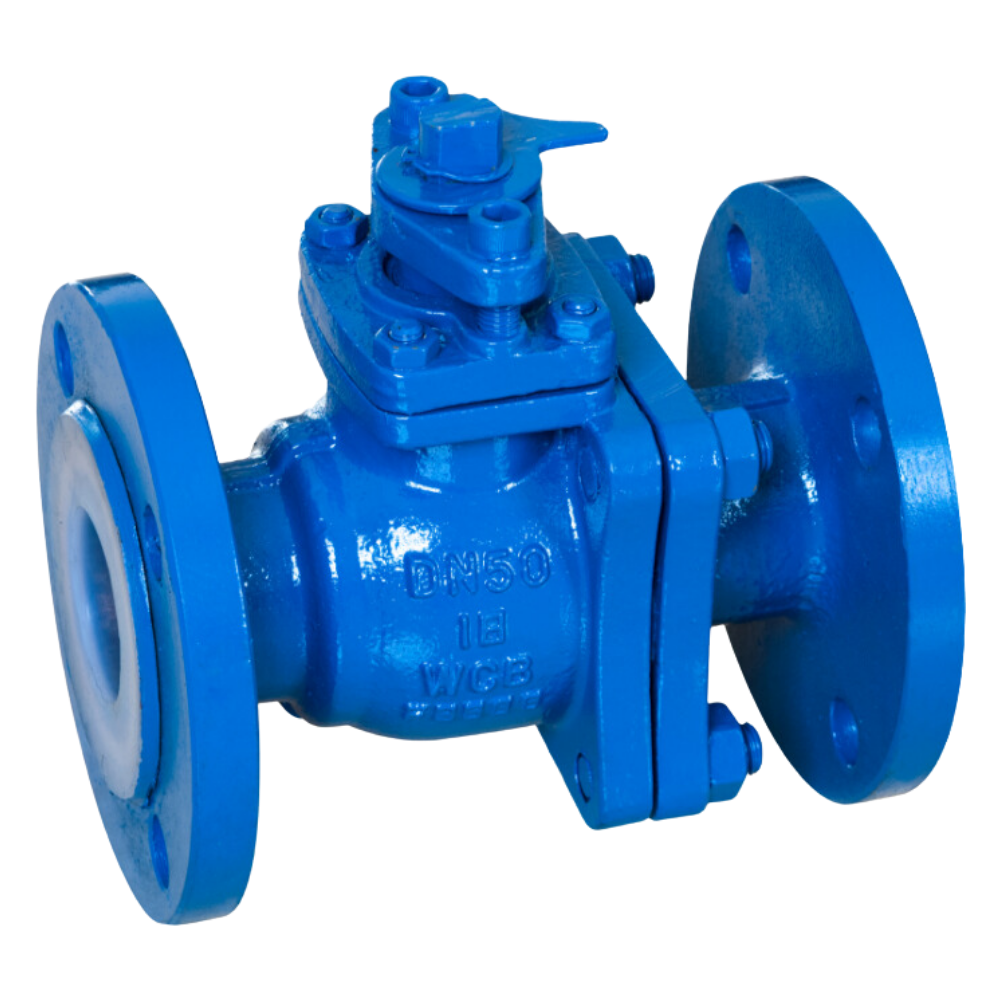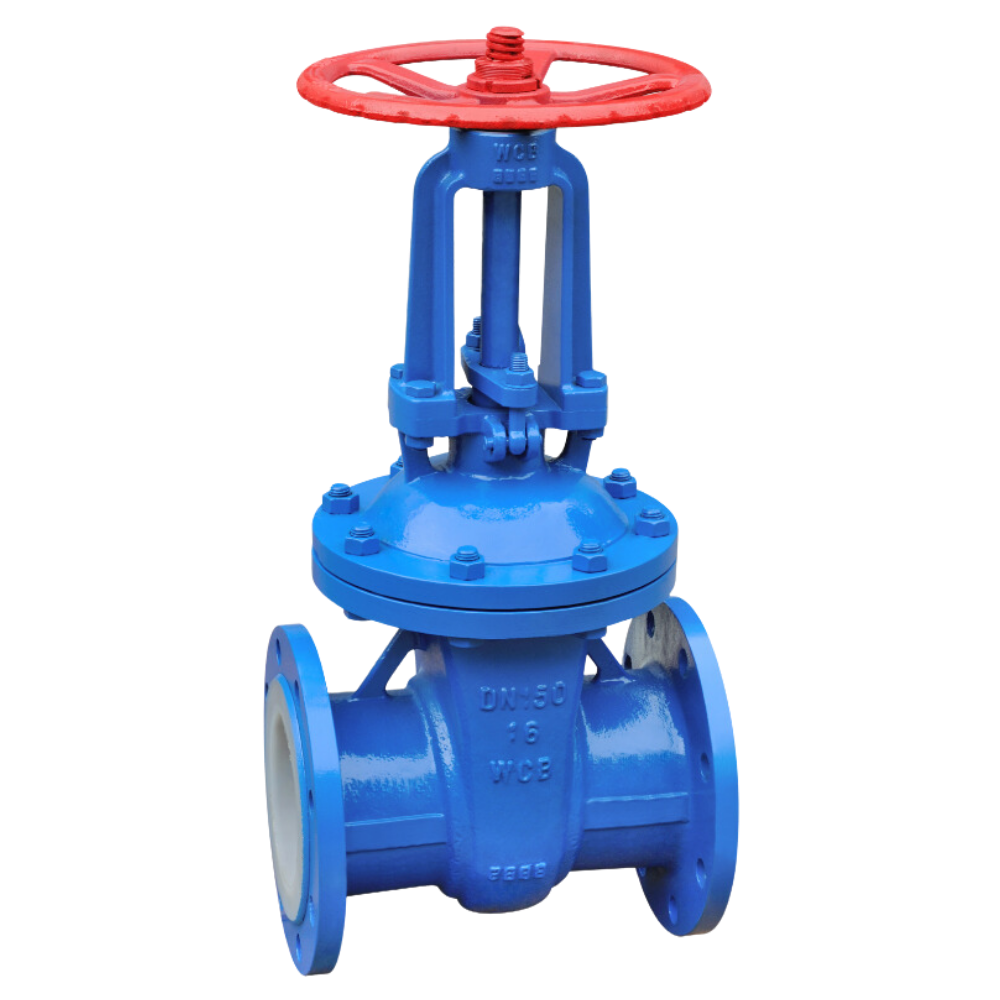

The most compelling difference between gate valves and ball valves is their mechanism for controlling flow.
A gate valve uses a sliding gate to block or allow fluid passage, which makes it better suited for fully open or closed positions but less ideal for throttling.
In contrast, a ball valve features a rotating ball with a hole through its center — enabling faster operation and more precise flow control, making it more versatile and reliable in high-pressure systems or where quick shutoff is essential.
Ball valves also tend to have a longer lifespan and are less prone to wear. Both have distinct features, operating principles, and applications.
Understanding the key differences between these valves can help in choosing the best one for a specific use.


| Feature | Gate Valve | Ball Valve |
| Definition | A valve that uses a gate or wedge to open or close fluid flow. | A valve with a rotating ball with a hole through the center to control flow. |
| Operation | Requires multiple turns to open/close, offering gradual control. | Operates with a quarter-turn, making it faster and easier to use. |
| Flow Control | Ideal for on/off control, but not suitable for throttling. | Excellent for quick shut-off and capable of handling throttling. |
| Seal Tightness | Takes time to seal properly, and may not be 100% leak-proof. | Provides a tighter seal, especially in full-port designs. |
| Durability | Prone to wear in certain environments due to moving parts. | Long-lasting, with fewer wear points. |
| Cost | Generally more affordable, especially for larger sizes. | Typically more expensive, especially in smaller sizes. |
A gate valve operates by lifting a gate or wedge to allow fluid to pass through.
The gate is perpendicular to the flow of liquid, and the valve opens slowly, requiring multiple turns of the handwheel to fully open or close.
This gradual operation helps reduce the risk of water hammer (a surge of pressure when fluid flow is suddenly stopped or started).
Gate valves are best suited for fully open or fully closed positions but are not ideal for throttling as they cannot maintain precise flow control.
Ball valves use a rotating ball with a hole through the middle to control fluid flow.
A quarter-turn of the handle rotates the ball, aligning the hole with the pipe to allow flow or turning it perpendicular to stop flow.
Ball valves operate quickly, providing an instant on/off function. This quick operation is useful in applications where a fast shut-off is required.
Ball valves are also highly effective at sealing, which helps prevent leakage.
| Feature | Gate Valve | Ball Valve | ||
| Advantages | Disadvantages | Advantages | Disadvantages | |
| Operation | Smooth, gradual control to avoid water hammer. | Slower operation due to multiple turns required. | Quick quarter-turn operation, easy to use. | Sudden shut-off can cause water hammer. |
| Flow Control | Best for on/off control in large pipelines. | Not suitable for throttling or precise control. | Offers quick shut-off and is better for throttling. | Not recommended for continuous throttling. |
| Durability | Simple design, fewer parts to maintain. | Prone to wear and damage in some environments. | Highly durable, with fewer wear points, good for frequent use. | Can be more expensive. |
| Seal Tightness | Effective but may require time to seal fully. | Can leak if not properly maintained. | Provides a tighter, leak-proof seal. | Risk of damage to seals over time. |
| Cost | Generally more affordable for larger sizes. | Slightly less cost-effective in small sizes. | More cost-effective in small sizes. | Can be pricier, especially in large sizes. |
| Application | Gate Valve | Ball Valve |
| Water Supply Systems | Commonly used for municipal and industrial water pipelines. | Often used for domestic water systems due to its quick operation. |
| Oil and Gas Pipelines | Suitable for high-pressure pipelines. | Preferred for rapid shut-off in oil pipelines. |
| Steam Systems | Works well in high-temperature environments. | Ball valves may degrade faster in extreme heat. |
| Chemical Processing | Can handle harsh chemicals if made of stainless steel. | Offers superior corrosion resistance in chemical applications. |
| Food and Beverage | Used for controlling flow in large industrial processes. | Ideal for clean and sanitary flow control. |
Gate valves typically use a rising stem mechanism, where the position of the stem indicates whether the valve is open or closed.
When the stem is fully extended, the valve is open, and when the stem is lowered, the valve is closed.
Non-rising stem gate valves require an external indicator to show the valve’s position since the stem doesn’t move visibly.
In a ball valve, the handle position is the primary indicator.
If the handle is parallel to the pipe, the valve is open. If the handle is perpendicular to the pipe, the valve is closed.
This simple design makes it easy to quickly check whether the valve is open or closed.
Consider whether you need precise flow control or fast on/off operation. For gradual control, gate valves are ideal, while ball valves are better for quick shut-off.
Evaluate the operating pressure and temperature of the system. Gate valves work well in high-pressure environments, while ball valves handle lower pressures and rapid shut-off.
If the system involves corrosive fluids, stainless steel ball valves or gate valves with corrosion-resistant materials are the best choice.
For large pipelines, gate valves are often more cost-effective, whereas ball valves can be more economical for smaller pipes.
Ball valves require less maintenance than gate valves, as their operation causes less wear and tear on internal parts.
Ball valves are generally better for quick shut-off applications, while gate valves are more suitable for gradual control in larger systems.
Gate valves are ideal for high-pressure environments, such as industrial water pipelines, where complete on/off control is necessary without frequent operation.
The primary disadvantage of a gate valve is its slower operation, which requires multiple turns to open or close, making it unsuitable for applications that require quick shut-off.
Yes, ball valves are commonly used for the main water shut-off in residential applications due to their quick and easy operation.
A ball valve is better for a water main in residential settings because it offers quick shut-off, while gate valves are typically used for larger, industrial pipelines.
The main disadvantage of a ball valve is that it can cause water hammer when closed too quickly, and the seals may wear out over time with frequent use.
The biggest advantage of a ball valve is its quarter-turn operation, which allows for quick shut-off and better sealing, reducing the chance of leaks.
Ball valves are known for their durability and can last for many years, often over a decade, depending on the material and operating conditions.
Yes, ball valves can be repaired by replacing the seals or the ball itself, although sometimes it’s more cost-effective to replace the entire valve.
Ball valves may leak due to worn-out seals or damage to the ball, especially if they are used in high-pressure or corrosive environments.
Resources:
Comparing Gate Valves and Ball Valves
Gate Valves vs. Ball Valves: How to Pick the Right On/Off Valve for Your Application

Strainers are essential in protecting equipment by filtering out debris and impurities in pipelines. However, not all strainers are created equal. With a variety of options, the Y-type strainer and duplex basket strainer stand out as popular choices. Now, you may be asking, “Which strainer is best for my needs?” Explore this guide to discover […]

Wafer butterfly valves provide good flow control with minimal pressure drop when fully open, making them suitable for various applications, but they have limited sealing capability, which may not be ideal for high-pressure situations. In contrast, flange butterfly valves offer superior sealing performance, designed to handle higher pressures and more demanding conditions. Both types can […]

Understanding the Essential Component of Industrial Filtration Bag filter housings are commonly used in industries to eliminate particulates from liquids without compromising the industrial process. However, structures that are designed to hold a filter bag, which acts as the barrier, are also specialized tools for contaminated particle collection. Especially in industrial applications, bag filter housing […]

Lined ball valves feature a protective lining that offers superior corrosion resistance and can handle a wider range of temperatures, making them ideal for aggressive chemical applications. In contrast, unlined ball valves are typically made from metal and may require additional coatings for protection, leading to more frequent maintenance and a shorter lifespan in harsh […]



